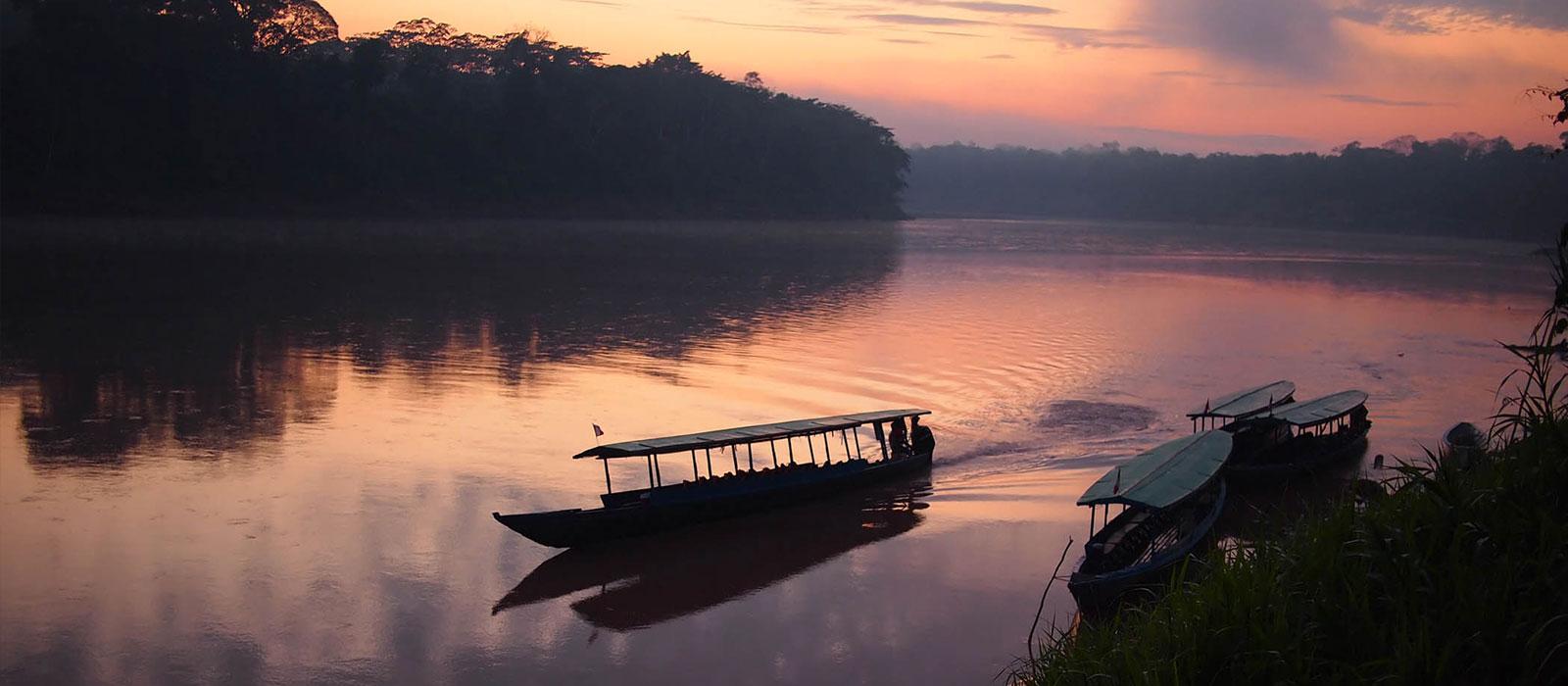
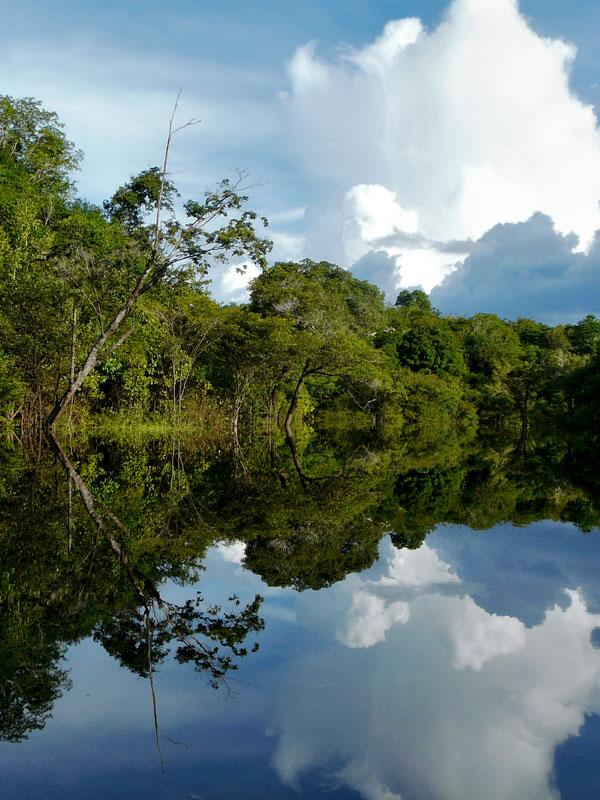
Your senses will be overwhelmed by all-encompassing, lush greenery as soon you enter the rainforest. But spend just a few days at a Peruvian jungle lodge and you will begin to regard this incredible ecosystem with new eyes and ears. These days, ecolodges come with modern comforts that make a full Amazon immersion all the more incredible.
Walk in the shadow of giant trees, climb to the top of canopy towers, hop into a canoe and glide across mirror-like lagoons. You’ll glimpse caimans and otters basking in the sun while jewel-colored parrots and macaws soar overhead. Travel to the Peruvian Amazon and marvel at nature’s boundless wonders.
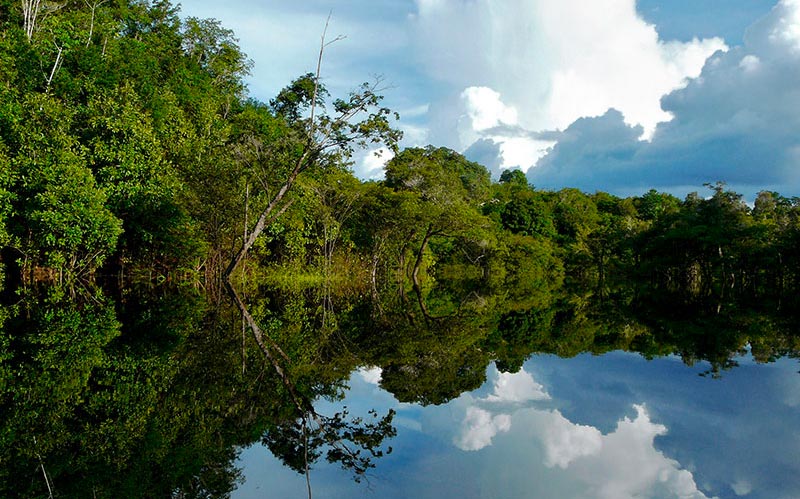
In Peru, three major hubs have been developed for research and tourism:
Why travel here? Located in southeastern Peru near the Bolivian and Brazilian borders, the city of Puerto Maldonado and Tambopata National Reserve are ideal destinations for travelers seeking an enriching, yet comfortable, experience. Several charming ecolodges offer excursions to macaw clay licks, oxbow lakes, native communities, and more. An added bonus is that Puerto Maldonado is less than a one-hour plane journey from Cusco, making it convenient to include the Amazon and Machu Picchu in one trip.
Why travel here? Explorers will delight in the pristine rainforest and rugged conditions experienced on an expedition to Manu National Park. Reachable from Cusco or Puerto Maldonado, the journey is long, but the variety of wildlife observed is spectacular. Compared with many Puerto Maldonado and Iquitos lodges, the accommodations in Manu National Park are more rustic and remote. Manu is especially attractive for birdwatchers, as over 1,000 bird species have been sighted in the rainforest, including the cock-of-the-rock and macaws.
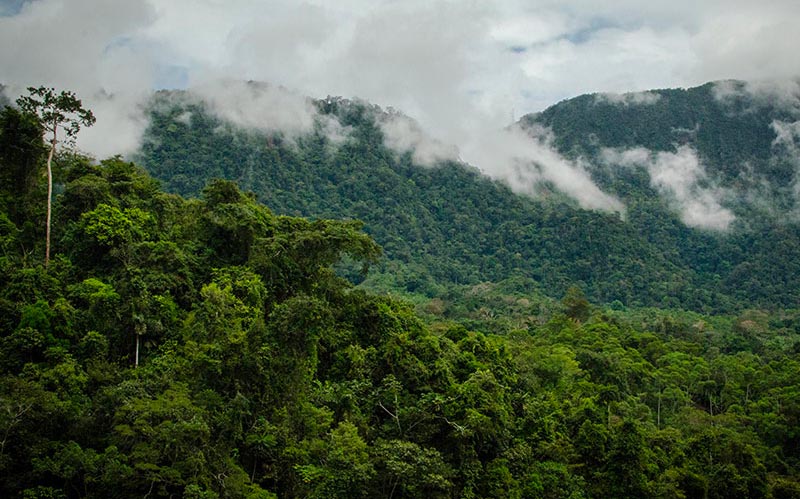
The city of Puerto Maldonado is the central hub of the southern Amazon. Situated in southeastern Peru, a stone’s thflex flex-wrap -mx-4 from the Bolivian and Brazilian borders, it is the gateway to the Madre de Dios River. This jungle metropolis provides convenient access to the Tambopata National Reserve and a large number of ecolodges. Quite a few of these lodges are tailored for the luxury traveler. Visitors have the opportunity to encounter giant river otters, macaws, caimans, and countless other endemic species. With direct flights from Puerto Maldonado to both Lima and Cusco, it is easy to fit this part of the Peruvian Amazon into your itinerary.
From May to October
From November to April
The Amazon’s exuberant wildlife is active all year round. However, both the dry and rainy seasons have advantages. During the dry season, walking trails are less muddy and flights are more punctual. There is also a greater chance of observing parrots and macaws as they swarm around the area’s clay licks.
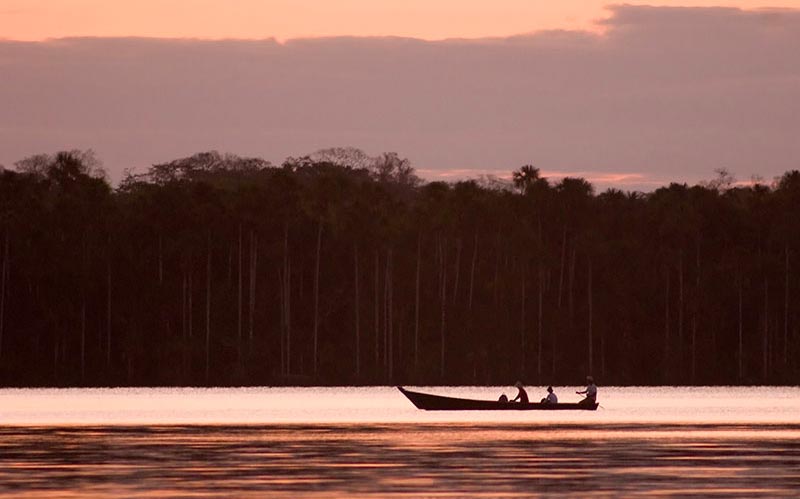
On the other hand, during the rainy season, afternoon downpours bring cooler temperatures and more bird activity. Ponds and wetlands form, attracting reptiles and amphibians. Black spider monkeys and other animals visit fruiting trees. There will also likely be fewer tourists at this time of year.
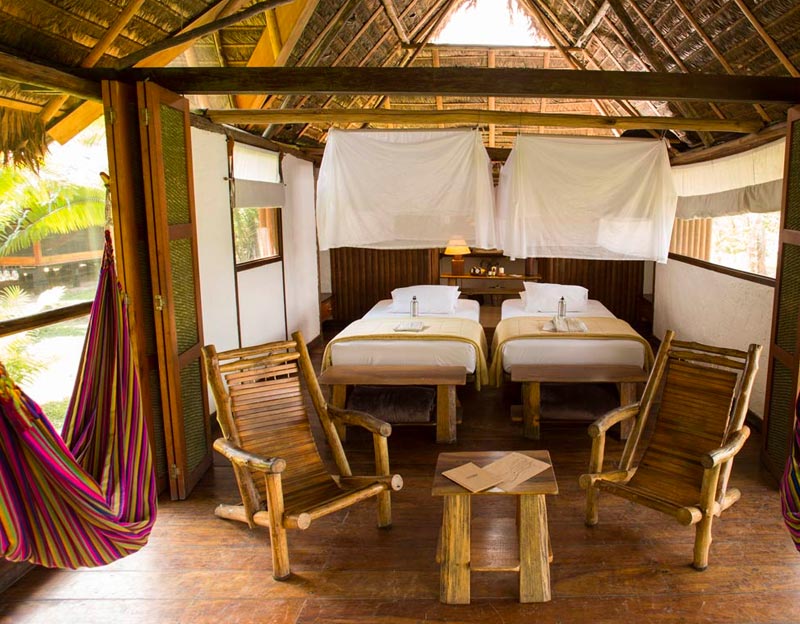
The best lodges in the Amazon allow you to experience the rainforest’s wonders while also working to preserve the unique environment and benefit local indigenous communities.
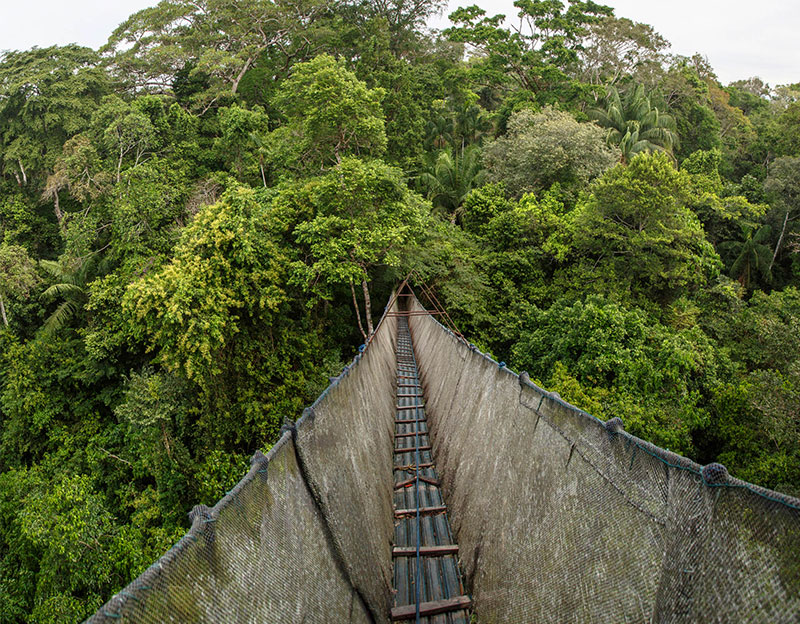
Canopy towers, hanging bridges, and ziplines allow you to glimpse the extreme biodiversity of the canopy and the many habitats that can be found on and around one single colossal tree.
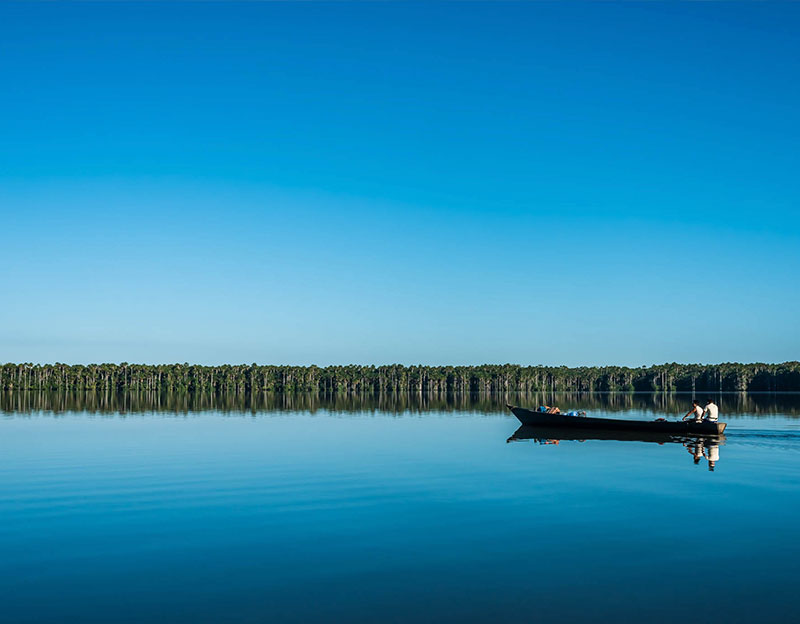
Wildlife flock to this sanctuary close to the Madre de Dios River. Glide across the mirror-like surface of the lake in a wooden canoe, to spot hoatzins, herons, ospreys, and giant river otters.
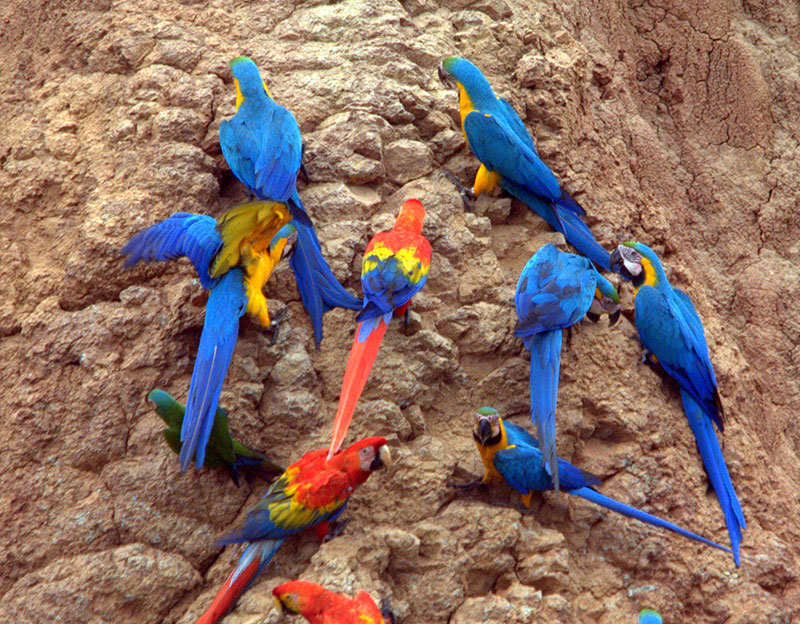
Dotted throughout the Tambopata National Reserve, clay licks are exposed sections of riverbeds that attract large flocks of macaws and parrots. The Tambopata Research Center is the premier lodge for travelers seeking to witness the early morning congregation of macaws and parrots, and learn more about them at the lodge’s on-site Tambopata Macaw Project.
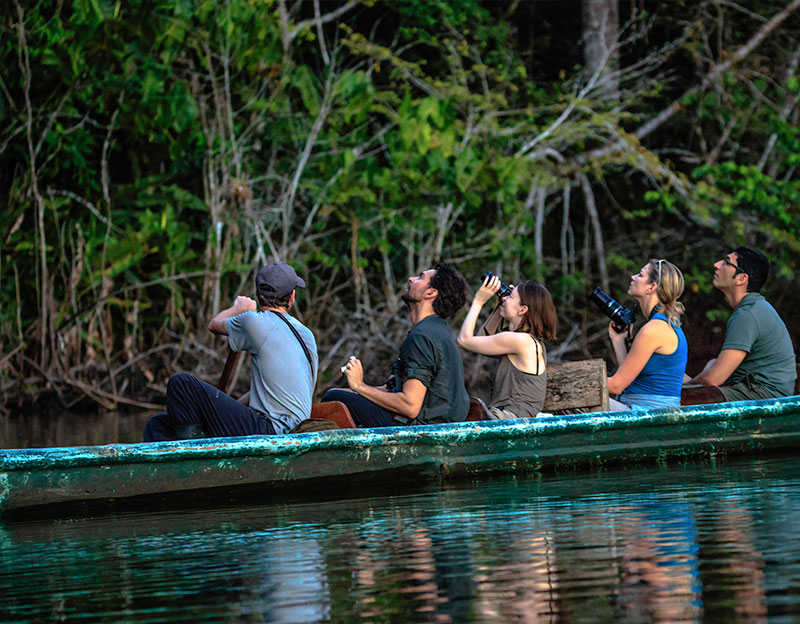
These lakes form as bends in the river are slowly cut off from the main water flow. Explore the lake waters aboard a paddle-driven boat and keep your eyes open for river otters, caimans, and birds.
An endangered species largely due to poaching, it is estimated that less than 5,000 giant river otters exist in the wild. One of the best places to spot giant river otters in and near Tambopata National Reserve is at an oxbow lake. Posada Amazonas ecolodge offers an excursion to Tres Chimbadas Lake, where travelers have a 34% chance of spotting giant river otter individuals.
The jaguar is an elusive species whose range extends from the southwestern United States to northern Argentina. It is the largest feline species in the Americas. While it is difficult to spot jaguars in the wild, 35% of guests who stay at Tambopata Research Center report sightings due to the lodge’s remote rainforest location.
Red howler monkeys are commonly observed throughout the Tambopata National Reserve and neighboring rainforest. Like its name suggests, this new world monkey species has a burnt orange coat and distinct vocalizations. In fact, their calls can be heard up to 3 miles (4.8 km) away. Keep your eyes peeled for howlers on inland forest hikes and in river-lined trees while traveling by boat.
Iquitos, the gateway to the northern Amazon, is home to an array of attractions as eclectic as the city’s history and people. Iquitos is a remarkable city — and not just because the only way to get there is by boat or by plane. Encounter animals up close at one of the city’s wildlife rescue centers before venturing off into the wild to see the same species in their natural habitat. In Iquitos, travelers have the option to stay at lodges located near the shores of the Amazon, or to travel down the river along Pacaya-Samiria National Reserve on an Amazon cruise. The Amazon River is the second-longest river in the world and is considered to be a Natural World Wonder. A variety of wildlife can be observed both in and on the outer edges of the river.
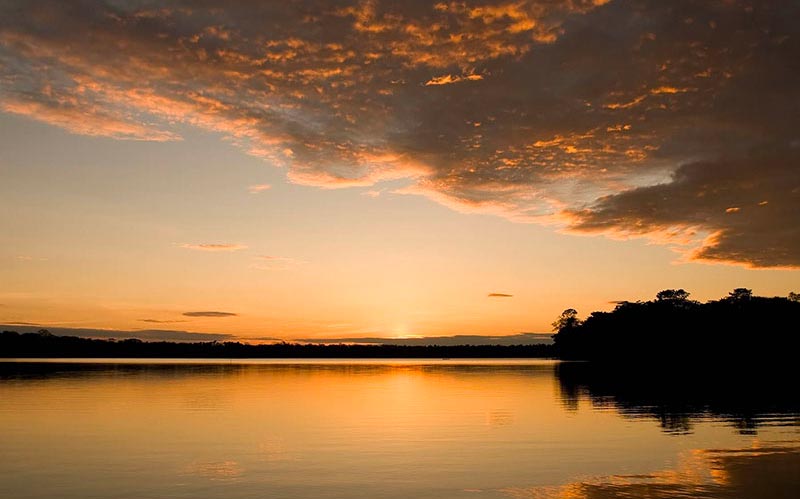
From June to November
From December to May
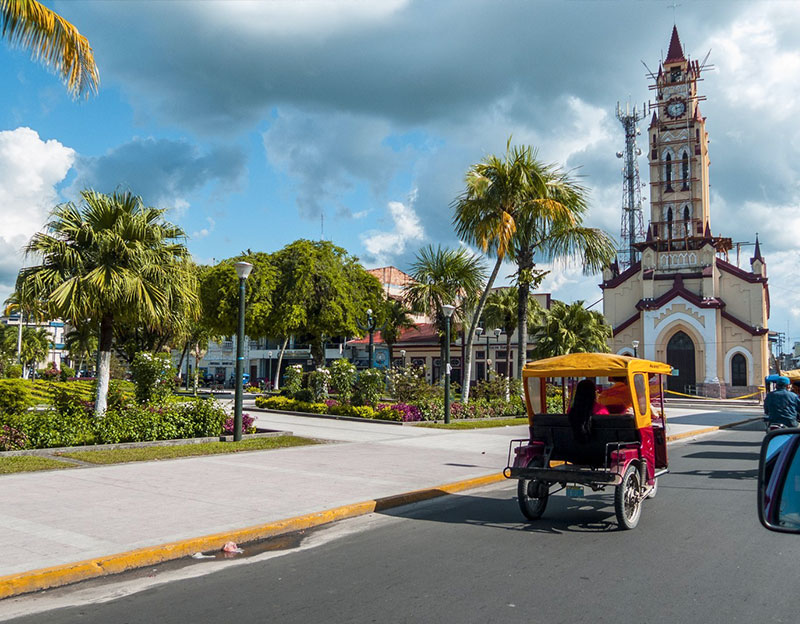
Venture to the Iquitos Plaza de Armas with the Matriz Church as its centerpiece and let yourself be swept up by the vibrant energy of the jungle city.
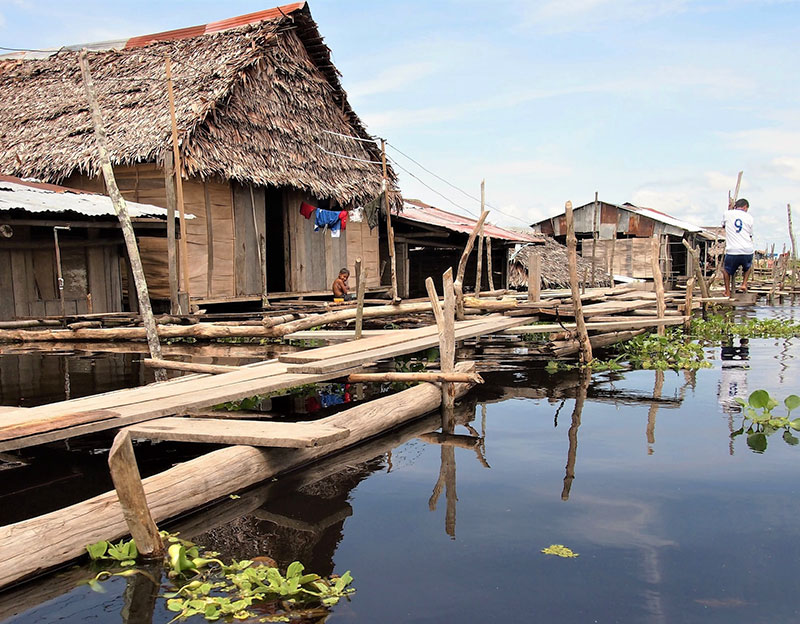
Belen is a labyrinth of stalls piled high with exotic fruits, freshly caught fish, and rainforest herbs, roots, and seeds.
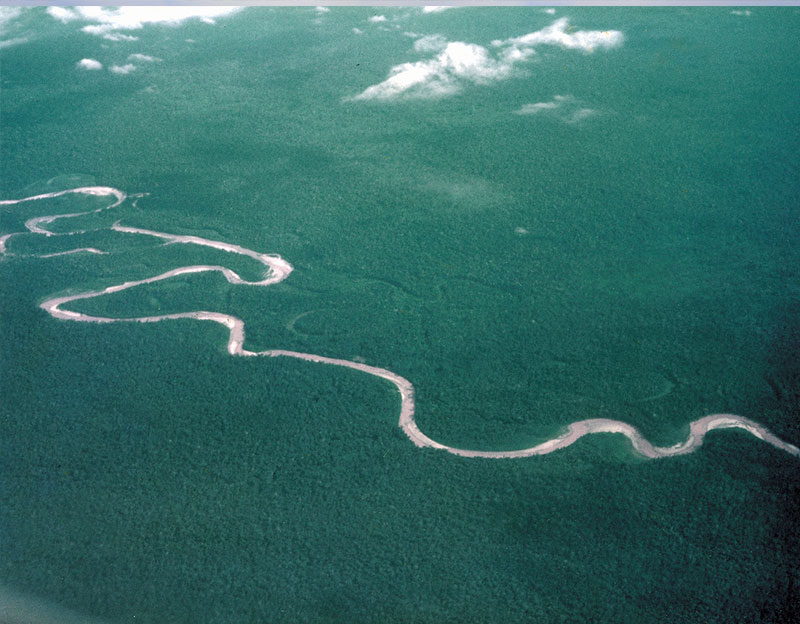
Discover the Amazon aboard a luxurious cruise ship. Wake up to an ever-shifting panoramic view of the rainforest, enjoy hikes and boat rides during the day, and relax aboard your ship at night.
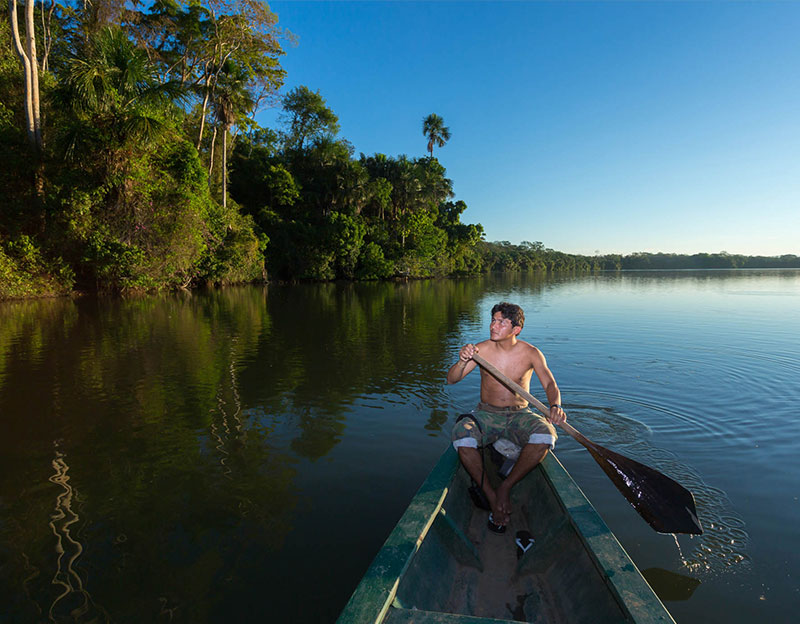
Your lodge or cruise ship may offer the chance to try piranha catch and release fishing using traditional techniques.
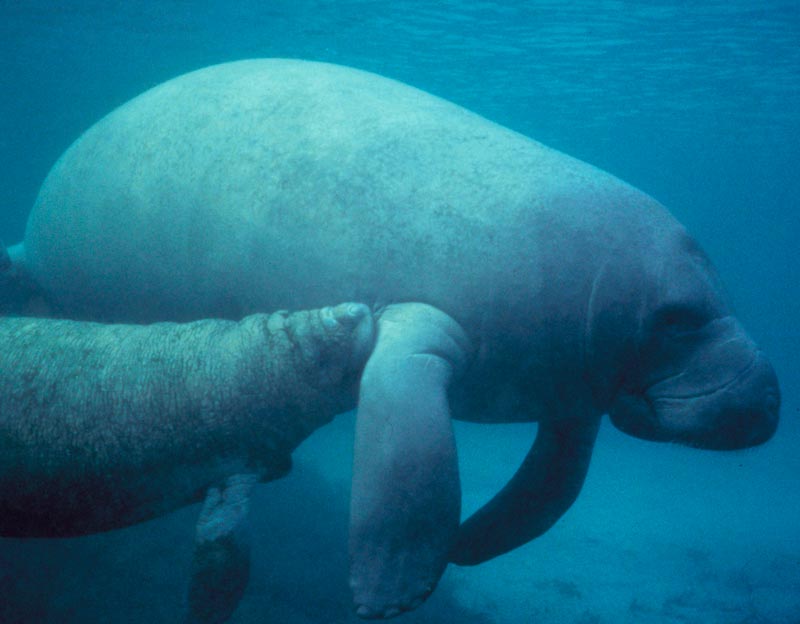
Feed rescued manatees and learn about efforts to protect this endangered species around Iquitos.
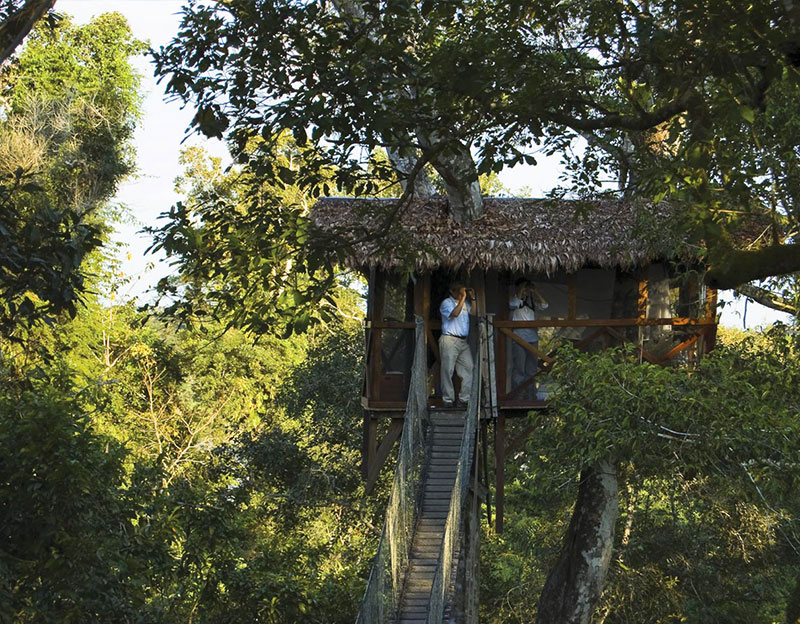
For the ultimate rainforest experience, stay at Treehouse Lodge. Twelve circular tree houses sit on private platforms, 34-67 ft (10-20 m) above the ground, and offer panoramic views of the rainforest. Enjoy the sights and sounds of the rainforest from your private tree house away from home.
In Peru, pink river dolphins are only found in the northern part of the country. This freshwater cetacean can be observed leaping in and out of the river as you make your way to your next excursion. Sadly, habitat destruction and fishing line entanglement have caused the total population of this species to decline. As a result, they are now considered endangered by the International Union for Conservation of Nature (IUCN).
On inland hikes, stay alert for three-toed sloths. These slow-paced mammals are active during the day and can be found high up in the Amazon Rainforest canopy. Although these photogenic animals appear to smile, keep in mind that contact with humans causes them great distress and is detrimental to their health. Rather than take a “sloth selfie,” observe these animals in their natural habitat as they slowly meander through the canopy.
The bald-headed uakari is one of the most striking new world monkeys. With a range restricted to patches of eastern Peru and western Brazil, it is a privilege to spy this primate. The best chance to observe this species is at Tapiche Jungle Reserve, an extremely rustic and remote lodge, located about a 10 to 12-hour boat journey from Iquitos.
Iquitos is the 6th largest city in Peru. However, the difficult terrain makes road-building impossible, meaning Iquitos is only accessible by air or by boat.
North of Tambopata National Reserve, Manu National Park’s remote location and protected status mean you’ll be lucky enough to experience a gorgeously pristine corner of Peruvian Amazon. Manu National Park comprises an area of 6,627 square miles (17,164 sq km). The geographic diversity ranges from high elevation Andean cloud forest to lowland Amazon basin. With this varying terrain, it’s no wonder that it is one of Earth’s most biologically diverse locations. Over 1,000 vertebrate species and 2,000–5,000 plant species have been recorded here. Adventurers will appreciate the national park’s tremendous biodiversity and rustic lodges. Some of the highlights include macaws, tapirs, and jaguars.

Geography and weather conditions will affect how you get around the park and what wildlife you see. Lower elevations of Manu National Park have a similar climate to Puerto Maldonado and Tambopata, whereas higher elevation areas are cooler.
From May to October
From November to April
The best time to visit depends on your preferences or interests. Wildlife activity varies throughout the year and is a good way to narflex flex-wrap -mx-4 down specific travel dates for your jungle adventure. For example, the dry season is the best time to see macaws and parrots at the clay licks, whereas reptiles and amphibians are more easily spotted during the rainy season. In the rainy season, there are also fewer tourists and more mosquitoes. As the Amazon Rainforest is a year-round destination, you may decide your travel dates based on the other destinations featured in your itinerary. For example, you’ll experience the best weather at Machu Picchu from May to September.
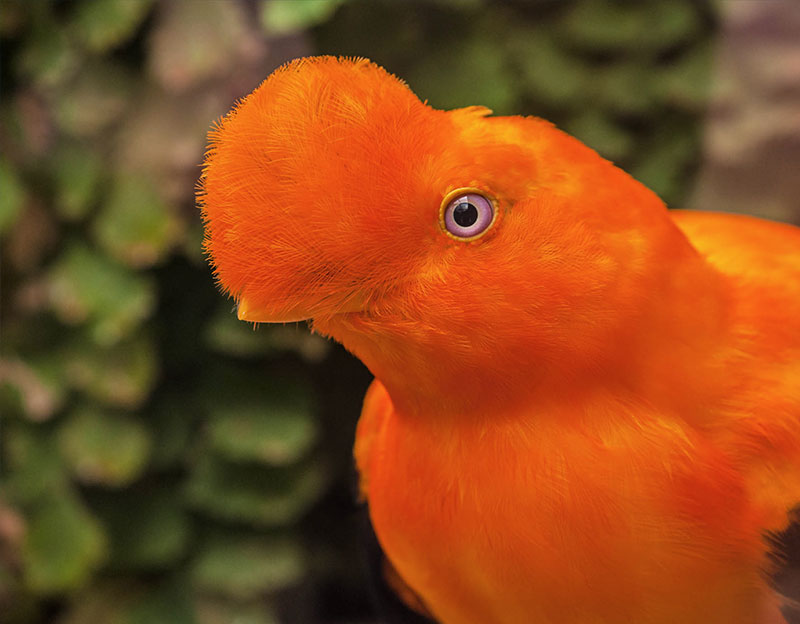
Over 1,000 species of birds have been recorded in Manu National Park. Explore the rainforest with your expert guide and add new bird species to your life list.
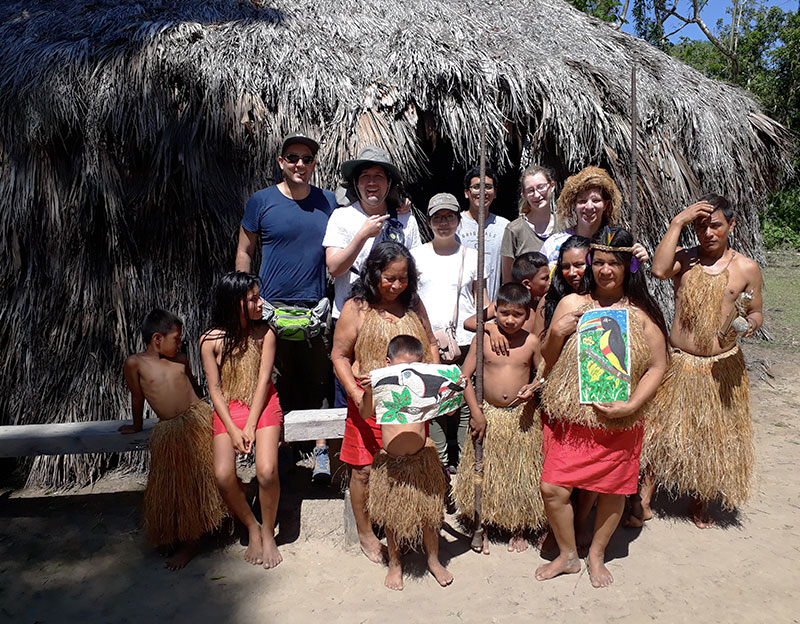
The Matsigenga near Manu are just a few of the hundreds of indigenous communities that live in the Amazon. Visiting these communities is an invaluable opportunity for cultural exchange.

An impressive variety of species live in and near oxbow lakes. Visit Cocha Salvador and Cocha Otorongo to see terns, skimmers, and even giant river otters.
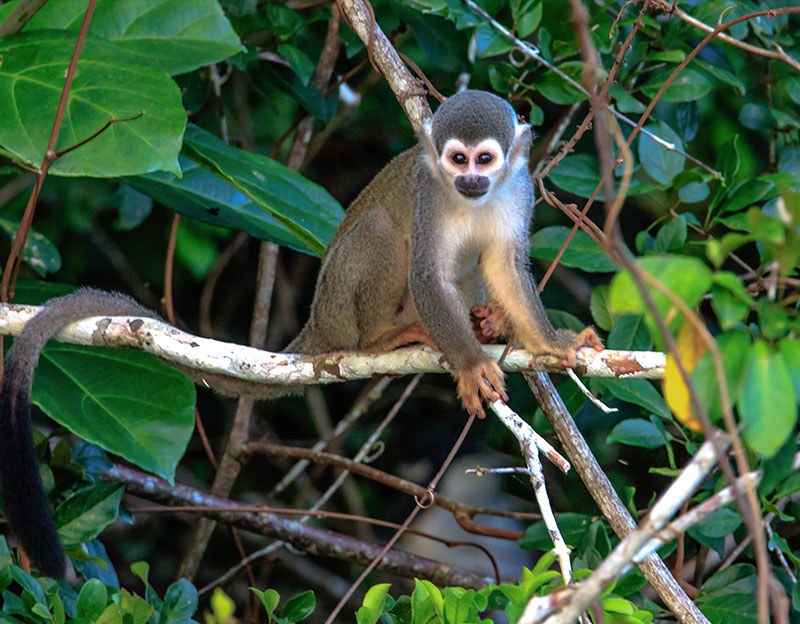
Ascend 65 ft (20 m) above the rainforest floor, past the canopy, for far-reaching views of the rainforest. Bring your binoculars for bird and monkey-watching!
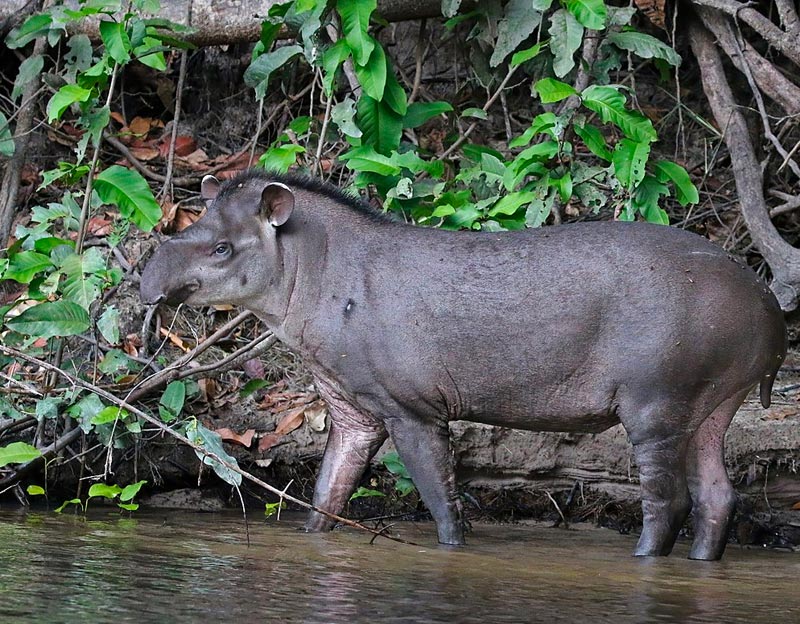
Venture out during the night in search of tapirs, the largest South American land mammal. Tapirs, along with other nocturnal animals, can be viewed from behind a blind.
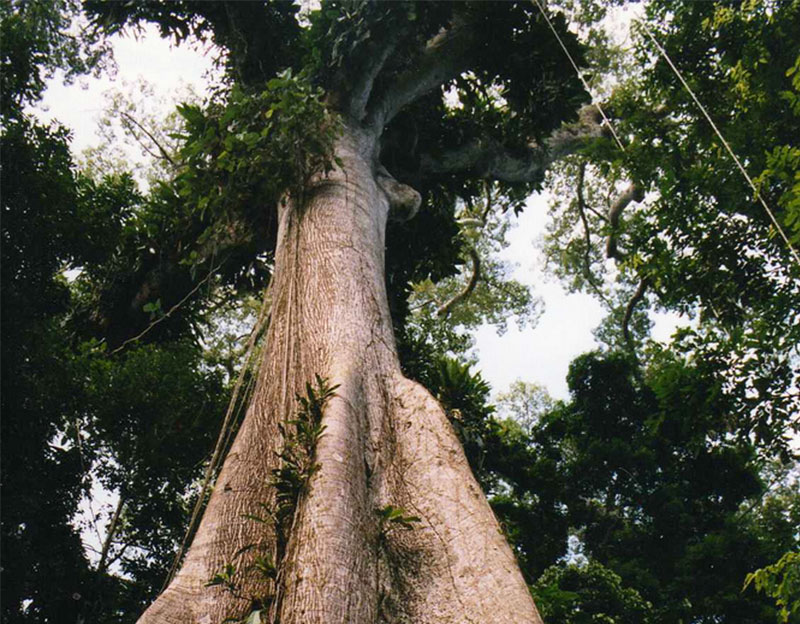
Marvel at Brazil nut, Ceiba (Kapok), and Ficus trees that gflex flex-wrap -mx-4 up to 160 ft (48 m) tall and host their own complex habitats from roots to canopy top.
Manu National Park’s immense biodiversity is not limited to vertebrates. In fact, over 1,300 species of butterflies have been spotted here. Keep your eyes peeled and your camera in focus for colorful butterfly sightings. These bejeweled insects are a wonder to behold. Some of the park’s most bewitching species include Brazilian Painted Ladies, Glasswings, and Clouded Yellows.
Like Tambopata National Reserve, macaws are also found in Manu National Park. Red, green and scarlet macaws soar around the Blanquillo Clay Lick to feast on its mineral-rich clay. Here you will also find colorful parrots as well as mammal species. Visitors observe the wildlife from behind a blind that is only 164 ft (50 m) from the claylick.
In Quechua, one of Peru’s indigenous languages, puma means “powerful”. The puma is the second-largest feline found in the Americas. In Manu National Park, pumas live in the park’s lowland rainforest zone. Like the jaguar, they are very elusive and sightings are rare.
Vast and geographically isolated, Manu National Park has no roads and requires some effort to access. The only way to get around is by boat. The Manu River and the Madre de Dios River form the southern and eastern borders of the reserve.
Speak to your doctor or a travel medicine specialist several weeks before traveling to clear up any concerns.
On rainforest walks, the best way to avoid stings and bites is to keep to the center of the trail. Don’t touch trees or branches and be careful not to stand in the middle of a path of marching ants. During excursions, stick close to the group. You’ll have a better chance of spotting critters with the help of the guide, and you don’t want to get lost in the vast rainforest.
Nearly every rainforest lodge program includes guided excursions to spot fascinating animals. Naturalist guides point out unique wildlife and teach you how to observe without disturbing the creatures or possibly endangering yourself. Stay on designated footpaths and do not get separated from your tour group. Be sure to turn off the flash on your camera when photographing.
Amazon cruise ships can be described as floating boutique hotels, boasting ever-changing views over one of the most majestic natural landscapes in the world. For travelers seeking to pair a rainforest adventure with luxurious comforts, a cruise ship is an excellent alternative to a lodge. Picture gliding down the Amazon River while soaking in a Jacuzzi on your ship’s observation deck. Or dining on a gourmet menu designed by one of Peru’s most exciting chefs, Pedro Miguel Schiaffino. Inquire with one of our expert Travel Advisors for more details about a Peruvian Amazon cruise.
General packing list for the Peruvian Amazon:
Space on the riverboat to your lodge is limited. This means guests are allowed to transport a specified maximum amount of luggage to and from the lodge. Any excess luggage can be stored at the lodge offices either at the airport or in Puerto Maldonado.
You will have to be extremely vigilant to avoid getting mosquitos bites. Some might say it’s an impossible ask, but there are measures you can take to minimize the possibility.